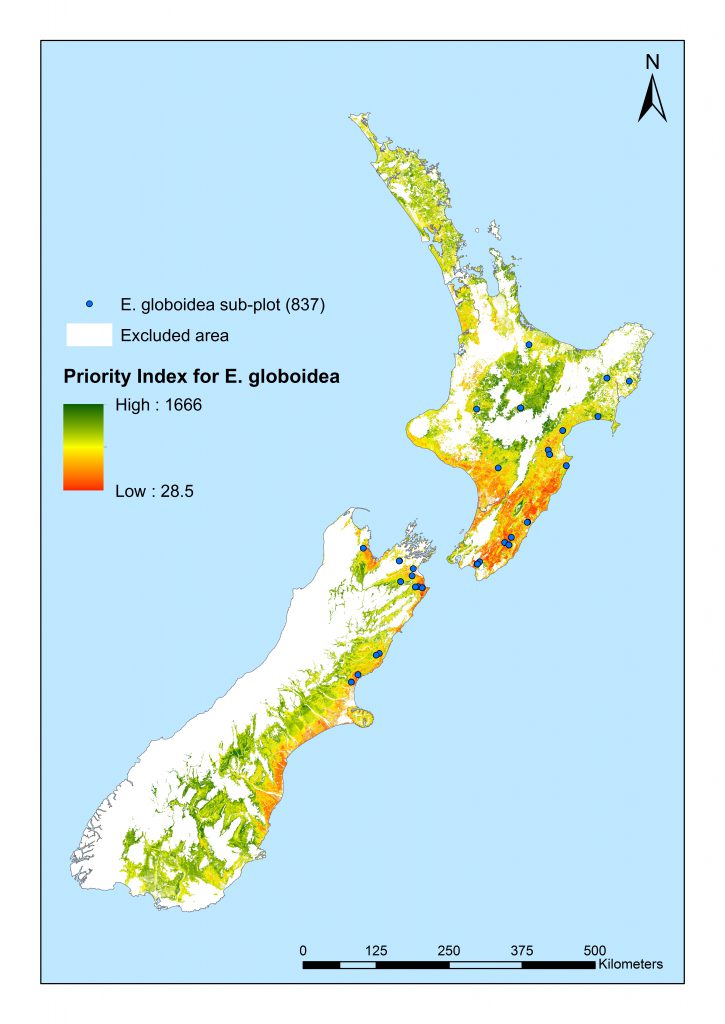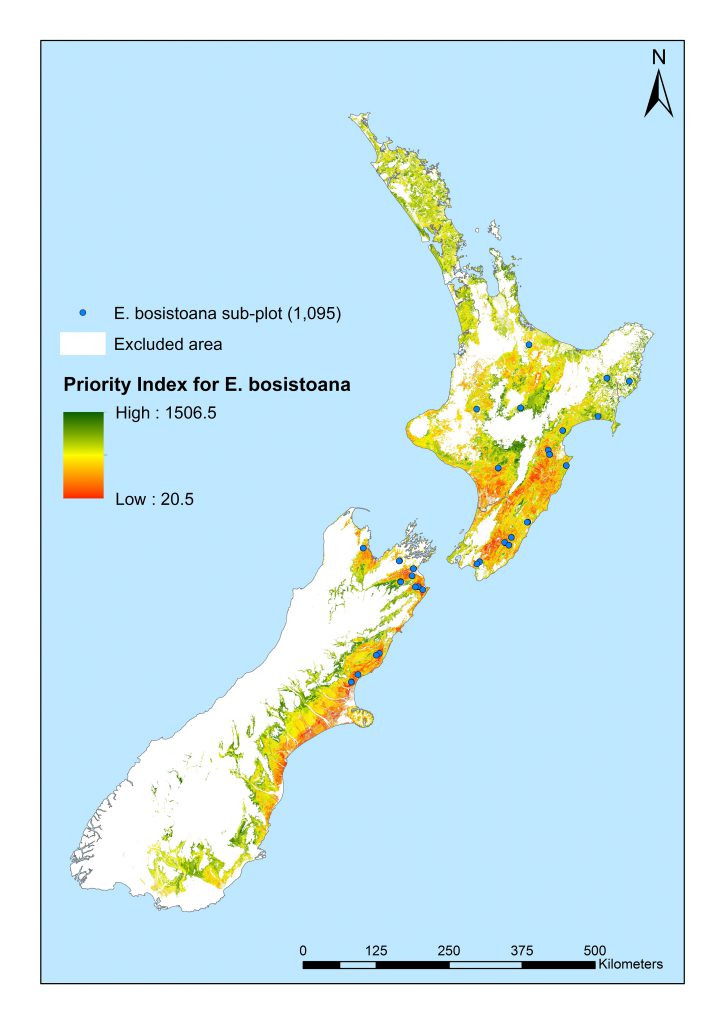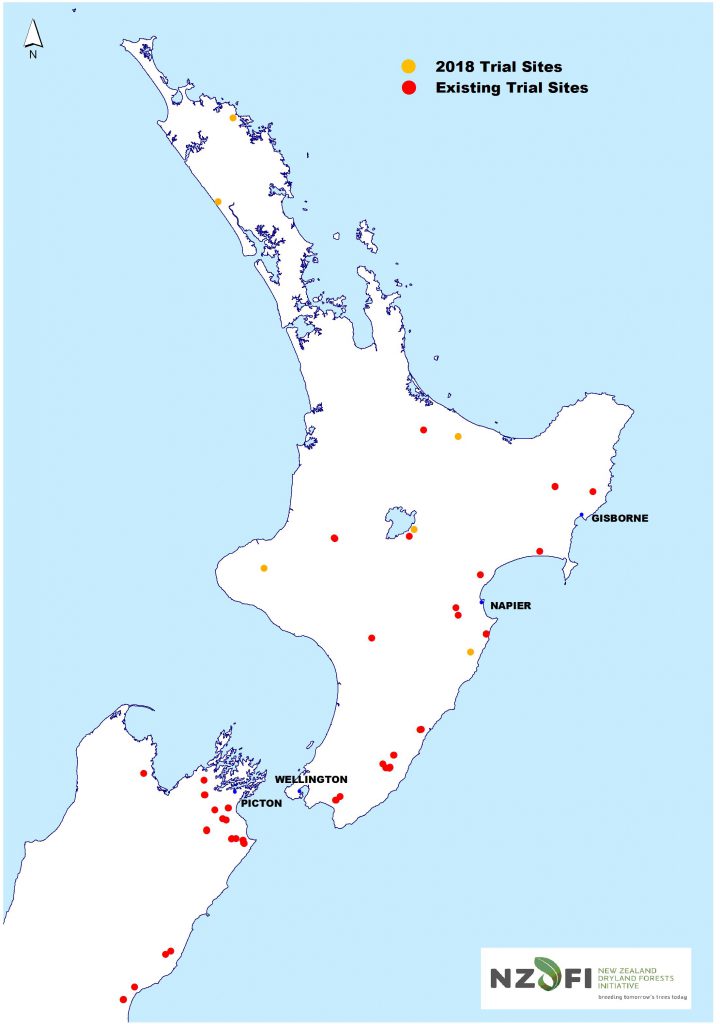Phone: 03 577 2395
C/- Marlborough Research Centre Trust, PO Box 875, Blenheim 7201


Masters student Thai son Le recently completed research into which areas NZDFI should target for new permanent sample plots (PSPs) of E. bosistoana and E. globoidea. Thai son Le developed a priority index and produced maps of the best places to locate PSPs in future.
The potential biological range of both species was determined based on thresholds (e.g. temperature limits) found in the literature. In some cases where literature was not available, we based thresholds on expert judgement. The result was the potential range for each species in New Zealand.
Then, we cross-referenced the environmental characteristics (e.g. elevation, temperature, etc.) of all our existing E. bosistoana and E. globoidea PSPs against the environmental characteristics of the potential range for each species.
Essentially, high priority areas are those that meet the biological requirements of a given species AND have environmental characteristics that are dissimilar to those found at existing PSPs.
High priority does NOT mean that the species will grow well there – for example, some of the southern South Island locations identified - but it does mean that, based on the literature, the species should be capable of surviving there and we don’t have any existing PSPs with environmental conditions like those for that area.
Likewise, low priority does NOT mean that the species will not grow there. It means that the environmental conditions for that area are already represented in existing PSPs. Establishing new PSPs in low priority areas will not yield as much understanding of the limits to growth as establishing new PSPs in high priority areas.

Priority index for E.globoidea PSPs (above), and E. bosistoana PSPs (below)

Where are NZDFI’s newest trials?
Eight new trials have been planted in the spring of 2018, and new PSPs will be established in these trials. The trials were planted independently of Thai Son’s research: however, it is interesting to see how closely the locations of some of the trials match the areas identified as high priority by Thai Son.
Paul Millen comments:
“It’s very interesting to see the areas that have been identified in North Island as being priority areas for new PSP’s. It’s almost like a premonition as some of the sites identified are where I have just completed planting new demonstration trials.”
The map on the right shows the 2018 trial sites with two in Northland, one in Bay of Plenty, a new site in Taupo and in Taumaranui, also a new one in Taranaki and another in Central Hawkes Bay.

C/- Marlborough Research Centre Trust, PO Box 875, Blenheim 7201